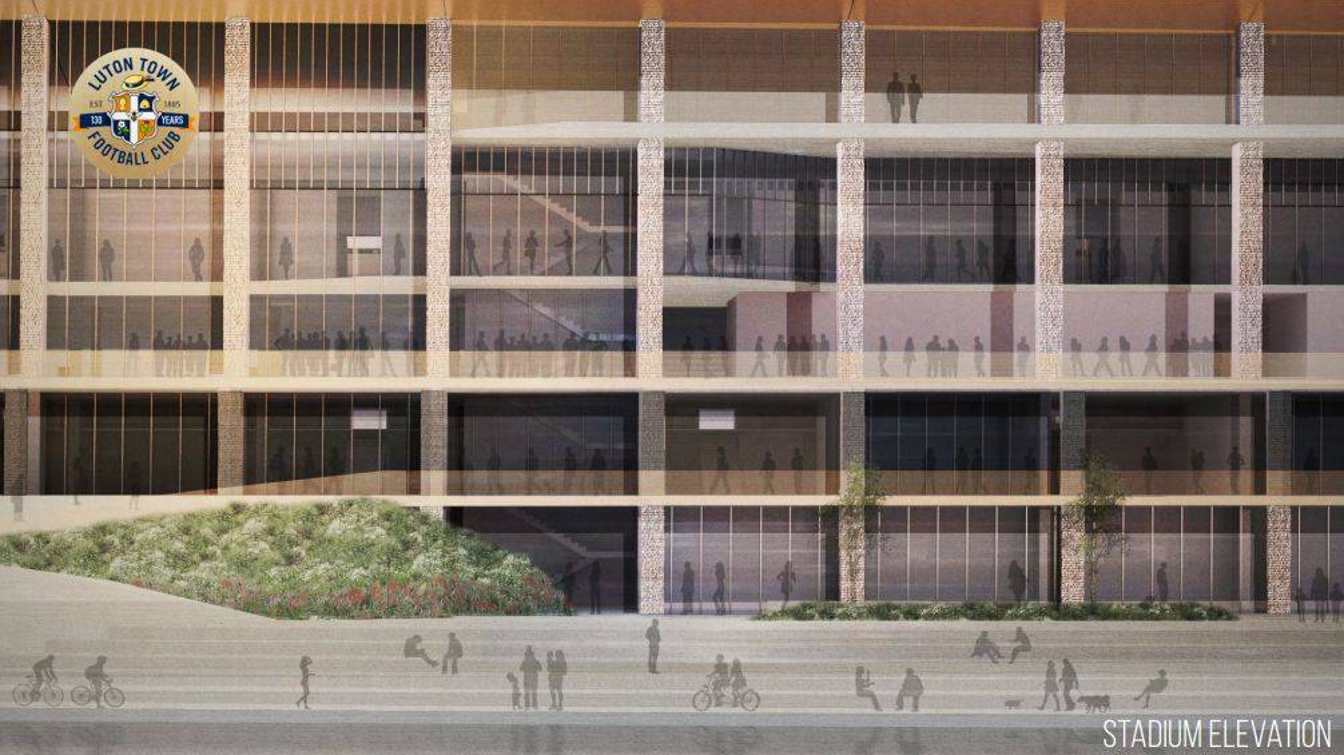England: New stadium for Luton possible thanks to river diversion
source: StadiumDB.com; author: Jakub Ducki
 Football clubs face a variety of problems. Replacing grass, rebuilding stands or renovating club buildings are the most common challenges. A club from central England will have to confront nature by changing the natural course of the River Lea in order to be able to start building a stadium.
Football clubs face a variety of problems. Replacing grass, rebuilding stands or renovating club buildings are the most common challenges. A club from central England will have to confront nature by changing the natural course of the River Lea in order to be able to start building a stadium.
Advertisement
Unusual trouble
Luton Town's new stadium is to be built in the Power Court area of the town centre, in a prime transport location. The land formerly occupied by industrial buildings was levelled in 2015 as part of the regeneration, and the club hopes that a stadium for around 23,000 spectators will be part of it. However, there has been a problem facing the club close to relegation to the Championship. In order to be able to move forward with construction, the course of the river flowing through the city centre must first be changed.
According to planning documents submitted to the borough council, realigning and opening up the new route of the River Lea at Power Court is an essential part of the proposals to build Power Court Stadium. Interestingly, one of the proposals was to pass the watercourse underneath the arena, but after appropriate surveys and consultation, it was decided that this would not be possible.
 © Luton Town FC / AndArchitects
© Luton Town FC / AndArchitects
The club’s announcement
Works are necessary to the River Lea to ensure commercial and residential developments can progress. The works will be phased, with the initial stage involving the rerouting of the central part of the river. The second phase focuses on the east end to include some deculverting and the opening up of the river along this edge. And phase three relates to the west end, and includes some opening up of the river and landscaping
- can be read in Luton Town's official letter.
The works will require advanced engineering and intelligent modelling which will be agreed with the Environment Agency. The club's authorities are aware that although discussions have already begun, it may take some time before the final course and shape of the river is fully approved by the relevant authorities.
 © Luton Town FC / AndArchitects
© Luton Town FC / AndArchitects
Comprehensive redevelopment
In 2019, outline consent was granted for a mixed-use development, the heart of which is to be a football stadium with a capacity of up to 23,000. However, this is not the end of the process. According to plans, the Power Court site will also be developed to include an entertainment, music and conference facility, educational, community and retail space, a hotel, space for retail, food and groceries, and up to 1,200 car parking spaces.
In September 2022, planning permission was granted for a second mixed-use project, increasing the number of residential units from 550 to 1,200. The aim is to complete construction in 2026, but with so many planning issues, it can be assumed that the project will almost certainly be delayed. Until the new arena is built, Luton Town is likely to remain at the climatic Kenilworth Road Stadium.
 © Luton Town FC / AndArchitects
© Luton Town FC / AndArchitects
Advertisement

 StadiumDB
StadiumDB